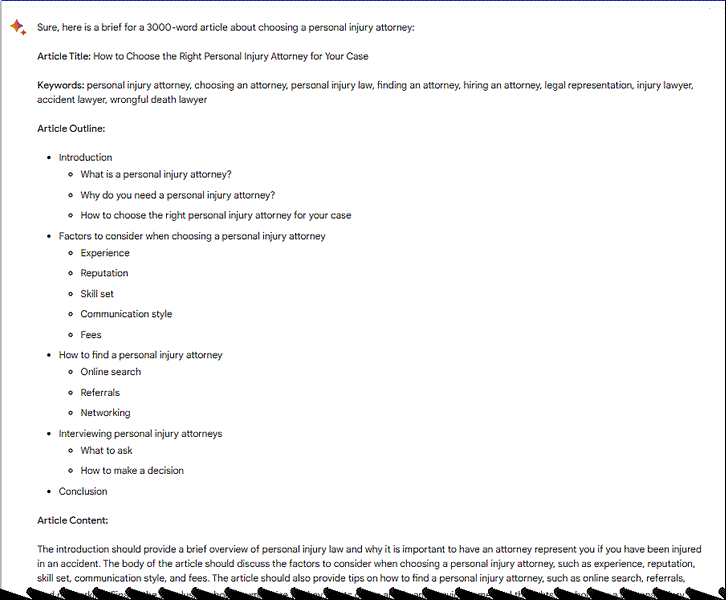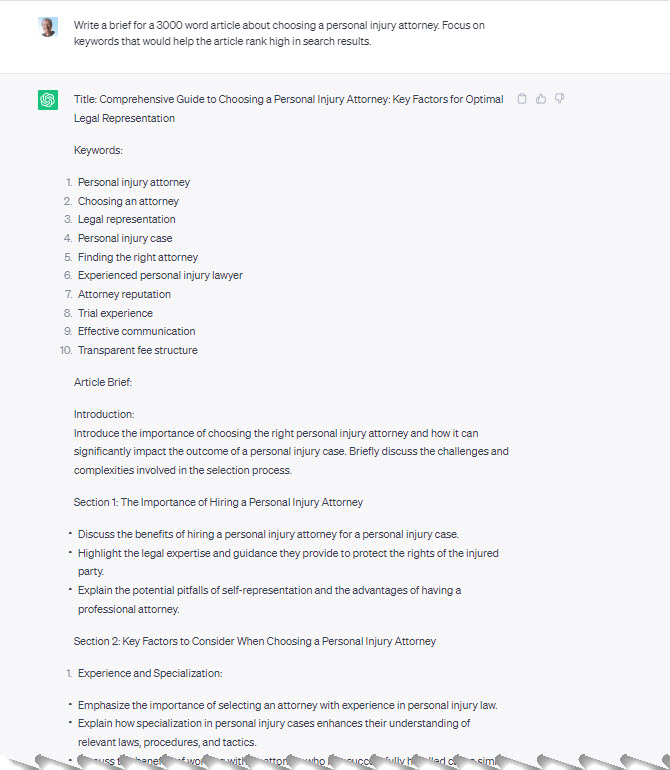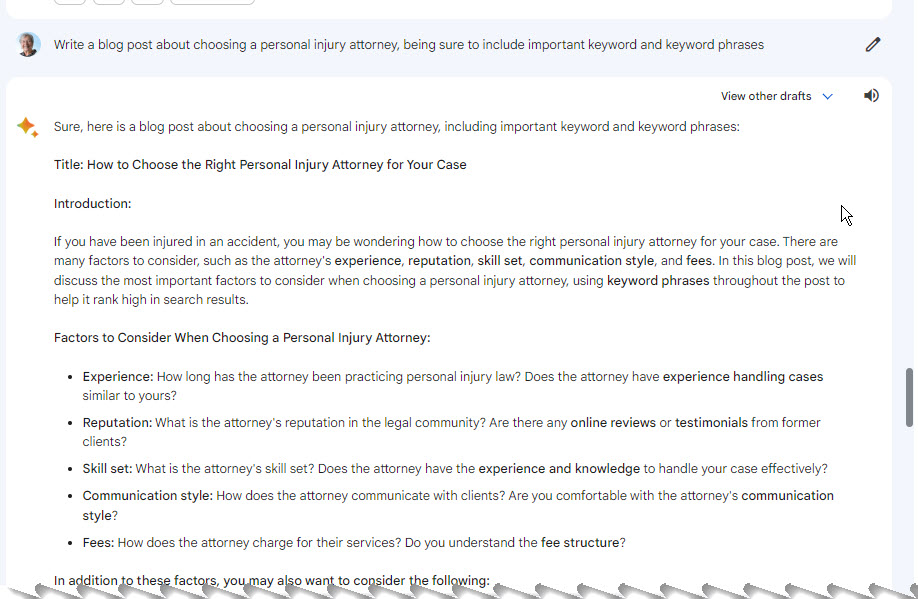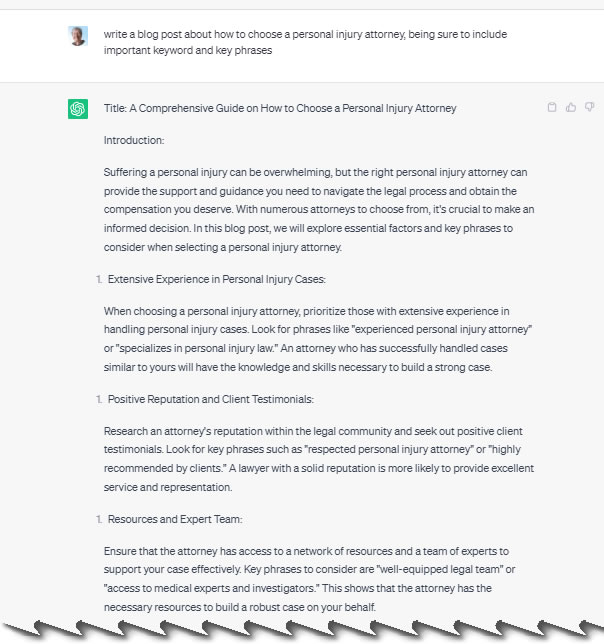Everyone is talking about artificial intelligence (AI) this year. Although AI isn’t new, the current buzz is all about generative AI. Generative AI can research, analyze and create various types of content faster than humans can. ChatGPT and Bard are two examples of generative AI tools.
These tools are both awed and feared. They’re awed because of their speed and capabilities. And they’re feared by many for the same reasons. They’re poised to change work and the workplace forever. In fact, many of those changes have already started.
Why You Can’t Ignore AI
No one likes change. But even if you don’t like change, or you fear AI, this is a technology that isn’t going away. The number of businesses using AI will grow, and it’s likely to affect a wide swathe of industries and occupations. You can’t afford to ignore AI or hope AI won’t affect you or your job. If you bury your head in the sand, you’ll miss the tide that’s coming in and you’ll drown.
What you do need to do is experiment with the technology and learn what it can do and what it does well. You need to test it yourself to see how it can help speed your work or the work of your employees. But you also must learn its limitations and potential perils.
Important note: For security and other reasons, some large corporations are restricting or banning employees from using generative AI tools at work. Learn and follow your employer’s (or your client’s) AI policies before using AI tools on work computers and for work-related tasks.
Benefits of Generative AI
One of the great benefits of artificial intelligence (AI) is that it can complete tasks in seconds that could take you many hours of time to complete. It can summarize, research, or write articles. AI can write the text of email campaigns and sequences, write ad copy, and suggest headlines and seo keywords. It can turn lists into spreadsheets, create spreadsheet formulas, create images, and do so much more. All in a fraction of the time it would take you to do the work yourself.
Furthermore, it’s simple to use for many tasks – especially content generation.
Related: Startup Tips that AI Won’t Change
Disadvantages of AI
There are a lot of problems with AI, too. Of major concern is the effect of AI on jobs and occupations. Because AI can perform tasks so much faster than humans, it is likely to make some occupations obsolete. At the same time, though, it will create new opportunities for people who are ready and willing to take advantage of them.
Another concern is that AI could use information from your website or data you input in a prompt to teach their algorithms. Then, it could use your work to respond to prompts from anyone – without paying you, crediting you, or protecting your proprietary data in any way.
Yet another issue: not everything the AI bots produce is true or accurate.
How AI Can Speed Content Creation
The speed with which AI can complete tasks can greatly increase your productivity. That’s especially true when it comes to content creation.
Every business needs various types of content. Creating that content can be difficult for business owners and employees who aren’t professional writers.
Generative AI can help you create content faster, and potentially at lower cost. Here’s an example.
Suppose you want to write an article and you want to start with an outline to cover the most important points. Or you’re a content manager and have to assign an article to a writer. You could spend an hour or more researching the web to be sure you included information that readers seem to be asking about.
Then you’d spend more time deciding on the order the material should be presented and the headline and subheads to use. The total time getting ready to write the article could be an hour and a half or more.
You could cut that time down to just a couple of minutes by using Bard of ChatGPT or other AI tools to create an outline or content brief for you.
To get them to work their magic, you enter a “prompt.” A prompt is your instruction telling the AI what you want it to do. Then you sit back and watch the AI do what you told it to. The results usually start showing up on screen within a second or two.
How to Use AI to Write a Content Brief
A content brief is a guideline that includes details such as title, length, target audience, and key points to be included in the article. Sometimes it includes details such as the tone of voice, length of sentences and other criteria specific to the publication.
If the article will be for a website and you want to try to get it to rank in search engine results, you could ask the AI tool to suggest keywords, to use in the article, too.
To show you how well this can work, I chose a topic I’ve never researched and know nothing about – Choosing a Personal Injury Attorney. I used both Bard (which is free) and the free version of ChatGPT (GPT-3.5) to see what each would produce. I used this same prompt on both services:
Write a brief for a 3000-word article about choosing a personal injury attorney. Focus on keywords that would help the article rank high in search results.
Both AI bots spat out their responses in seconds. Both produced a basic outline along with some additional guidelines.
Here’s a screenshot of the article brief Bard wrote.

Click here to see the entire brief.
And here’s a screen shot of the brief ChatGPT produced:

Click here to see the entire brief.
As you can see, the wording and detail is different in each of the AI-produced content briefs. However, either would make a good outline and approach for writing the document.
Using AI to Write the Entire Article
But suppose you want AI to do more than write the content brief? Will the AI chatbots write the article for you, too?
Both Bard and ChatGPT will write content for you, but to get a long document written, you may have to do it in steps.
ChatGPT says that the longest document it can produce is roughly 1400 to 1600 words. Most of the test documents I’ve asked ChatGPT to create wound up being considerably shorter.
If you prompt Bard to tell you the length of documents it can create, it says there’s no limit to the length if you’re patient and wait. But I’ve never gotten Bard to produce more than 1200-1500 words, even when I specified a longer limit. It’s possible the test articles I asked to have written didn’t warrant longer content than what was produced, or I didn’t provide enough information in my prompts to generate longer articles.
Here are screenshots of what Bard and ChatGPT produced when I asked each of them to write an article on choosing a personal injury attorney.
This is a partial view of what Bard wrote:

Click to see the entire article Bard created.
When I asked ChatGPT to create an article for the brief it created, it responded that it can’t create copy that long. (The brief was for a “3000-word article.”) So then, instead, in a separate dialogue that didn’t refer to the brief, I requested it to write on the subject. Here’s a partial view of what it wrote.

Click to see the entire output.
Free Generative AI Tools vs Paid
I only used two free generative AI tools to produce the examples in this article. But there is an ever-growing number of fee-based AI tools available. Some have been around longer than ChatGPT and Bard. Others are hitting the scene every day.
Some offer templates to help you write prompts and achieve desired results. Depending on the service they may have templates for writing blog copy, emails, social media posts, product descriptions and more.
The templates typically give you a form to fill in details about what you want produced and the audience you want to reach. When you complete the form, you click a button and the system creates the content.
Some of the paid services are fairly good, useful and easy to use. Others aren’t. Some are better at certain types of tasks than others, too. Some provide additional features such as SEO tools, plagiarism analysis, and AI detection tools. The latter examines text to determine whether or not it appears to have been generated by AI.
Most of the fee-based services subscription-based. Depending on the service, the charge may entitle you to generate a certain amount of tokens or words per month or a set number of content pieces per month. The more you pay, the more content you can generate. Because the quality and ease of use varies so much, test services before committing to a long-term subscription or high monthly fee. Look for free trial periods and/or a money back guarantee if you are unsatisfied with the results.
Related: What Kind of Digital Content Do You Need for Your Business?
Can You Use AI-Created Content As-Is?
Frankly, there’s no one-size fits all answer to that question.
Sometimes the AI-generated text is repetitive, too formal, stilted, or unsatisfactory in some other way. But sometimes, the content generated by AI services is well-written and sounds as though it was created by a human. In those cases, you might be able to use the content with few or no changes.
But before you slap it up on your website or use it elsewhere, there are several things to know.
1 –AI generated content can occasionally infringe on copyright.
Thus, you need to run the AI-produced content through a plagiarism checker to be sure it doesn’t include any copyright violations. You can do a copyright check for free on both Dupli Checker and Grammarly. Another excellent tool is Copyscape, but you have to pay a small fee to use it.
2 – The AI-generated content is generic.
Its output is going to be similar to content your audience can find in multiple other places on the web. If you want the content to resonate with your readers and distinguish you from your competitors, you’ll need to edit and adapt it in some way.
3 – Only human-created content can be copyrighted.
Under current Copyright Office guidance, you wouldn’t be able to claim a copyright on content generated completely by AI. To meet current standards for copyright protection, you’d need to make substantial human changes to the content. Even so, the Copyright Office says, “copyright will only protect the human-authored aspects of the work, which are “independent of” and do “not affect” the copyright status of the AI-generated material itself.”
4 – You need to fact check AI-responses.
AI tools generate their responses from the data they’ve been trained on. That data might be biased, inaccurate, or worse. Additionally, AI sometimes “enhances” or invents “facts” to fit a particular response.
What’s the Best Way to Use AI in Your Business?
The speed at which AI can generate various types of content makes it a tremendous productivity tool. AI services can research and write any type of text at lightning-fast speeds. They also can be very useful for coming up with ideas for what to say when you don’t know what to say or don’t know the best way to word something. For instance, you might ask an AI service to write a promo for an upcoming webinar or to compose an email that asks customers for referrals.
But to avoid the pitfalls of AI-generated content, the best practice is to think of the AI-generated content as an example of how to approach a topic and what key points to include. You should also:
- Fact check any information that you’re not sure about.
- Use a plagiarism checker on the response
- Change some or all of the wording in AI responses to put it in your own voice.
- Add links to your website, products, reviews, social media pages or store.
Making those changes will take some time. But you’ll have a much better piece of content. And you’ll get it done in far less time than it would take if you didn’t use AI to help.
Image source: Istockphoto
